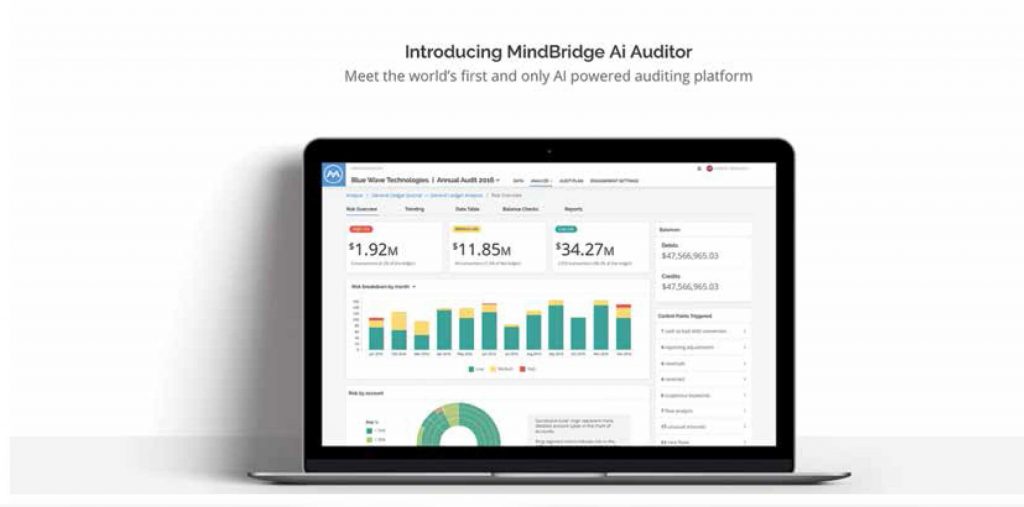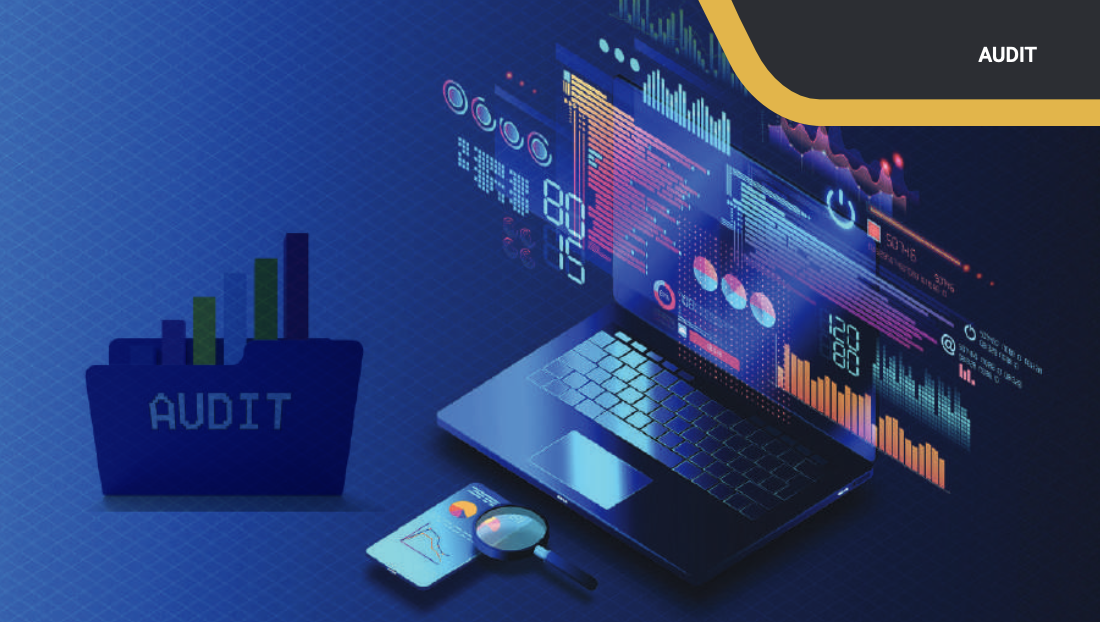The software is available!
By Jim McFie, a Fellow of ICPAK
A few weeks ago, the Journal of Accountancy, a United States publication, held an Accounting Technology Roundtable, in which three of the profession’s leading tech experts spoke about automation in the area of accountancy. The three experts were David Cieslak, chief cloud officer and executive vice president with businessconsulting firm RKL Solutions and a popular accounting conference speaker best known for his Inspector Gadget keynotes; Liz Mason, founder and CEO of High Rock Accounting, an
Arizona-based firm that specializes in using
“cutting-edge technology” to enhance clients’ accounting operations; and Amy Vetter, a keynote speaker and business adviser who is CEO of The B3 Method Institute, and the Technology Innovations Taskforce leader for the American Institute of Certified Public Accountants Information Management and Technology Assurance (IMTA) Executive Committee, and author of the book “Integrative Advisory Services: Expanding Your Accounting Services Beyond the Cloud”.
The first question put to the trio related to whether artificial intelligence (AI), blockchain or something else would produce the biggest changes in the accounting profession. The unanimous reply was artificial intelligence; Mason added that accountants also need to be looking at augmented analytics and advanced analytics. When Amy Vetter was asked what were the biggest changes she foresaw for the accounting profession in the next five to ten years, she stated that there is a lot of talk about accounting firms hiring non-CPAs. An interesting part of that shift is that firms will need privacy and cybersecurity experts and computer systems experts as automation takes on a bigger portion of audit work. When data starts feeding in automatically into systems that evaluate every transaction and flag ones that auditors should check more closely, accounting firms will need people who can test the systems. They will need to make sure that the data is feeding in properly and securely so that clients are comfortable about accountants having the data and keeping it safe. The biggest change for CPAs would be the need to embrace continuous learning. So whether it is blockchain, robotics, or whatever it is, CPAs should start picking out what are the things that really interest them and start building a learning plan beyond the typical CPD. Liz Mason was asked what technology was she most excited about and why. She is really excited about the concept of automated data entry and code-free accounting. She pointed out that technology has evolved over the past couple of years to increase the base-level efficiency of her team by 40%, and she was excited to see what happens next. She believes the machine-learning algorithms are only getting started on how they will make accountants’ lives so much more efficient from the client advisory and client accounting services perspective. In addition, looking into advancements occurring outside of accounting but in related industries, she is excited about natural-language processing — the concept being that one can read contracts via a robotic automated tool and pull out the information that is important. For example, in insurance, there is a company called RiskGenius that has been building
a tool to analyze insurance contracts and pull out all of the important information: if one takes that ability and applies it to accounting, one could imagine the implications of recording accounting transactions: many accountants spend hours on M&A transactions just to get the journal entries right: if one could have a tool that did that for one, it would make significant savings in time for any kind of financial contract. She is also excited about advanced analytics and what is happening in data science. The ability to take data — not only from historical sources, but current sources that are not only quantitative but qualitative — and to analyze them in real time, plus adding the ability to do predictive analytics on top of it, gives her an excitement that she cannot describe in words: as we move forward, we will have CFOs with these augmented analytic models in front of them, showing them exactly what is going to happen with predictive indexes so they can make decisions based on mathematics and data: I think one has to be cautious about being able to predict the future – we have only to think of any meteorological predictions to realise how uncertain we have to be about predictions.

The interviewer pointed out that David Cieslak was the only member of the panel who had participated in an earlier roundtable. The first roundtable had been held in late 2011: he was asked to name what stands out for him as he views the changes that have taken place with accounting technology since the first roundtable way. Thinking about the changes that have transpired in the last eight years, he was struck by the fact that a time had come when firms and practitioners are appreciating the impact of technology, probably because they have seen the impact technology has had in their personal lives: in the US, many people are connected to their smart devices day in and day out: many people have brought Amazon Alexa or Google Home into their households: they see the impact technology has for them personally, and they naturally then ask if they are doing all they can to leverage technology in the workplace. Millennials are assuming leadership roles in firms and that cannot but help to help push a digital mindset to the organization.
He was then asked to give his opinion as to where the accounting profession stands when it comes to technology — ahead of the game, on the right track, or not where it should be. His reply was that he thought, on balance, that it is on the right track, but he added that a number of firms that are largely rooted in traditional or legacy services are trailing and may still find themselves in a kind of a survival mode, diminishing the remaining value within their organization: other firms are understanding the opportunity that technology presents and crafting their service offerings accordingly. Liz Mason disagreed. She thought that the typical accounting firm is way behind: there are new technologies that people are not even talking about. Large firms have great big budgets and are making these newer technologies a priority. They are working very hard to implement them across the board. Some young firms are pushing the industry forward – or pulling it if one is looking at a tech adoption curve: she reiterated that the majority of firms are behind. Even firms that think that they have adopted cloud-based technology have not fully integrated cloud-based technology. Vetter qualified his earlier statement: he considers technology companies part of the accounting profession – they are on the right track: the segment that may be even further behind than accounting firms is the corporate side of accounting – a lot of corporate accounting departments are stuck in very antiquated technology because budgets cannot get approved for them to actually upgrade or get to the cloud. Liz Mason completely agreed with him that corporate accounting departments are probably the furthest behind – companies are not making accounting a priority because it is an “overhead.”
Liz Mason was queried on what needs to be happening within the accounting profession to get to a position where she would say that it is not behind. Her reply was that, at the firm level, she thought that every single team member — every partner, every director, every manager, every senior, every member of staff — needs to be thinking about what technology could do to help them: people need to be trained to have critical-thinking skills instead of “we want you to be a robot and produce the same results as the prior year.
Liz Mason was queried on what needs to be happening within the accounting profession to get to a position where she would say that it is not behind. Her reply was that, at the firm level, she thought that every single team member — every partner, every director, every manager, every senior, every member of staff — needs to be thinking about what technology could do to help them: people need to be trained to have criticalthinking skills instead of “we want you to be a robot and produce the same results as the prior year.” It is a culture shift that needs to happen. She pointed out that she had done a lot of consulting with large companies on how to make their departments more efficient, and one of the biggest issues is redefining roles. They put these people in buckets, and buckets are no longer working from that perspective. To have streamlined technology and efficient processes, one needs more dynamic roles and the ability to leverage (and) outsource when the expertise is not available internally. Processes need to be analyzed, mapped and understood so that processes can first be fixed and then one should review technology solutions to help with the issues and hire experts when needed – but there is always training and ongoing analysis. The rate of change is only increasing. If a new technology was implemented three years ago and the supplier has not released any updates or put any funding into R&D, the technology is already out of date.
David Cieslak was asked about the skills that CPAs should be developing now to stay competitive in the new tech future. He replied that it can seem overwhelming and daunting, but it is a matter of developing the right mindset on the part of the individual: it is revisiting roles and responsibilities: the ideal individual has a combination of technical and digital skills, business skills, people skills, and leadership skills. Behind or underneath all of that is a mindset of constant learning. Amy Vetter added that she thought that one’s quest to learn new aptitudes can seem like a huge hurdle that accountants have to get over — new skills to be acquired, new technology to be learnt, new services to be offered — all these seem overwhelming. When an implementation plan is being crafted, one should not just be thinking about the business process or new service. One has to spend equal time on the people side of the implementation, understanding how they are feeling about it. Often there can be some negativity, but if one really dives deep into what the negativity is, one can understand what is holding people back and make small adjustments that can get most people on board. One needs to do it intentionally, do it with a plan, and stay really grounded in what one needs to accomplish each day without getting overwhelmed by the process.
Liz Mason added “To quote Walt Disney, keep moving forward. All of those small incremental changes add up over time, and that is what a great change management plan does”.
When one thinks about actually using artificial intelligence in auditing, one needs to visit MindBridge Ai, a Canadian company, at https://www.mindbridge.ai/ products/ai-auditor/ This company claims that it revolutionizes financial analysis as the world’s first and only AI powered auditing platform. Lightning fast, riskranked analysis on 100% of transactions, with zero scripting, means that one can provide greater assurance than ever before, all the while saving valuable time and resources. With Ai Auditor, cumbersome CAAT tools are a thing of the past, and with them go the associated risk of missing errors or fraud that may lurk in financial data. It provides a comprehensive, riskbased approach to support one’s audit. There are plenty of challenges with established audit practices. Outdated CAAT tools, sampling practices and the explosive growth of big data, all present major barriers to detecting anomalies, intentional or otherwise, in financial data. The Ai Auditor platform works by one’s side, augmenting one’s capacity to detect errors in the data—not only by analyzing the entire data set, but by cross-correlating dozens of testing criteria against every data point and presenting one with a view of every user, vendor and transaction, by risk, all within moments of ingesting one’s data. MindBridge’s analysis for external auditing runs very deep, and it is incredibly comprehensive. While their platform is stacked with traditional tests based on domain expertise and business rules, the analysis is also greatly enhanced. Statistical methods like regression and Benford’s Law are applied, as are numerous machine learning algorithms and AI seeded with knowledge from the domain expertise of some of the world’s top CPAs. One can watch a five minute video on the site as Robin Grosset, MindBridge Ai CTO, jumps into the MindBridge Ai Auditor platform, demonstrating data ingestion, risk-ranked scoring and reporting, an overview of the Ai Auditor control point checks, flow analysis and workflows. Samantha Bowling, a partner with Garbelman Winslow CPAs, a small Maryland firm, started working with MindBridge in 2017: she says, “Today, I have direct links to the software we use and can get a report in 10 minutes. It’s amazing. The great thing about working with a small software company is they are willing to listen and make changes. Small public accounting firms can implement this technology for less than $10,000. The price depends on the size of the audit practice, as the world’s first and only AI powered auditing platform. Lightning fast, riskranked analysis on 100% of transactions, with zero scripting, means that one can provide greater assurance than ever before, all the while saving valuable time and resources. With Ai Auditor, cumbersome CAAT tools are a thing of the past, and with them go the associated risk of missing errors or fraud that may lurk in financial data. It provides a comprehensive, riskbased approach to support one’s audit. There are plenty of challenges with established audit practices. Outdated CAAT tools, sampling practices and the explosive growth of big data, all present major barriers to detecting anomalies, intentional or otherwise, in financial data. The Ai Auditor platform works by one’s side, augmenting one’s capacity to detect errors in the data—not only by analyzing the entire data set, but by cross-correlating dozens of testing criteria against every data point and presenting one with a view
of every user, vendor and transaction, by risk, all within moments of ingesting one’s data. MindBridge’s analysis for external auditing runs very deep, and it is incredibly comprehensive. While their platform is stacked with traditional tests based on domain expertise and business rules, the analysis is also greatly enhanced. Statistical methods like regression and Benford’s Law are applied, as are numerous machine learning algorithms and AI seeded with knowledge from the domain expertise of some of the world’s top CPAs. One can watch a five-minute video on the site as Robin Grosset, MindBridge Ai CTO, jumps into the MindBridge Ai Auditor platform, demonstrating data ingestion, risk-ranked scoring, and reporting, an overview of the Ai Auditor control point checks, flow analysis and workflows. Samantha Bowling, a partner with Garbelman Winslow CPAs, a small Maryland firm, started working with MindBridge in 2017: she says, “Today, I have direct links to the software we use and can get a report in 10 minutes. It’s amazing. The great thing about working with a small software company is they are willing to listen and make changes. Small public accounting firms can implement this technology for less than $10,000. The price depends on the size of the audit practice, but even if you want to try it out with one client, it’s worth getting your feet wet. We now have a competitive advantage. I work with not-for-profits that use QuickBooks
Online and other cloud-based software. I go into the cloud for MindBridge, click the QuickBooks link for our clients, and link my clients to the platform. Then it pulls in all the information. I’m now able to more accurately pick a relevant sample for my audits based on risks at the transactions level. This should help us grow our audit practice. This gives us a competitive advantage over firms that use traditional statistical sampling. We are selecting our sample by using AI to review all transactions and pick the riskiest transactions for our sample”. That amount of $10,000 is not small: but it could save large amounts in the future.




